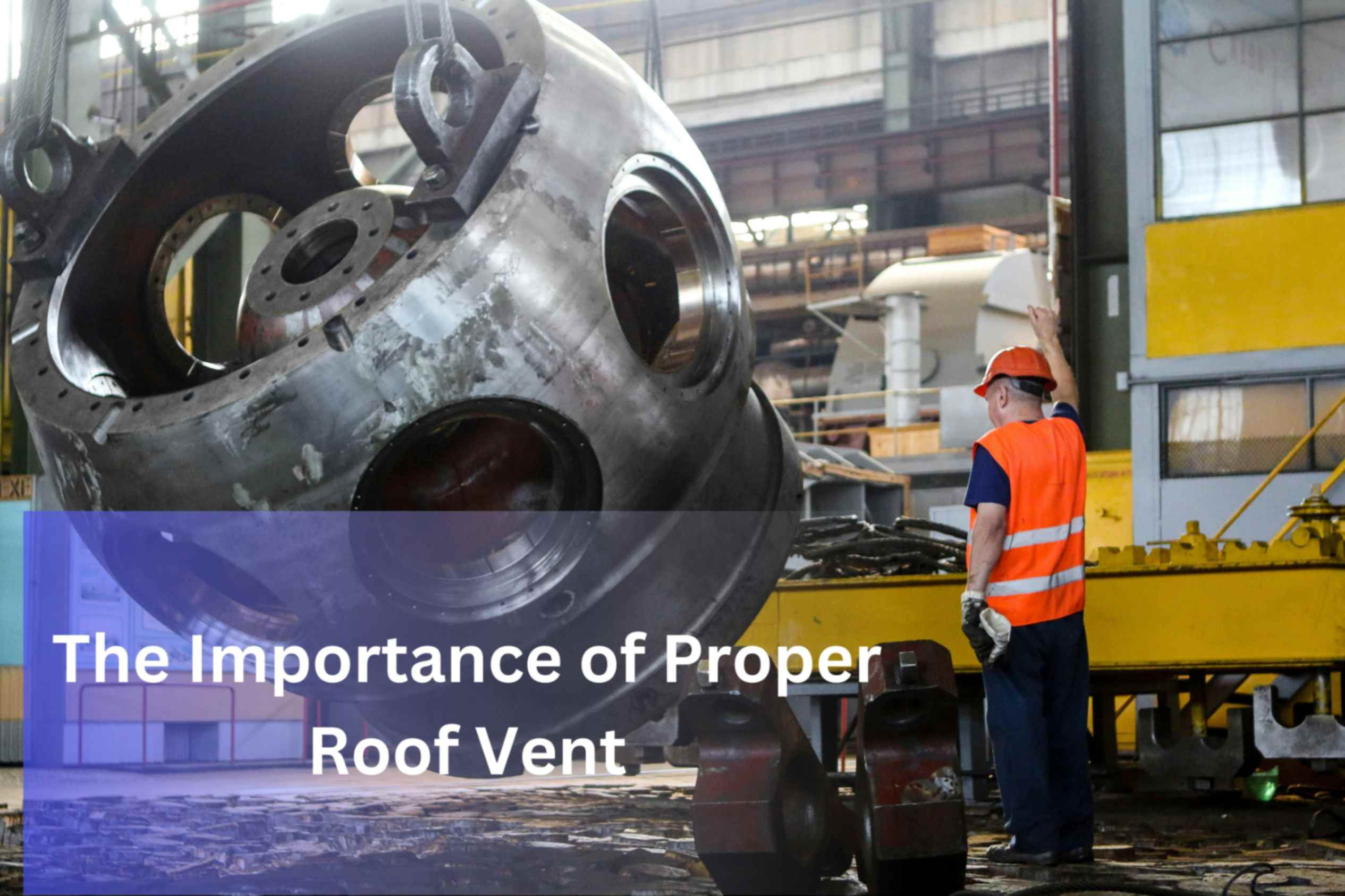The Importance of Proper Roof Vent
Posted on July 30, 2024 by Admin

Proper roof ventilation is an integral part of the good health and longevity of your home's roof. With most homeowners underestimating its importance, numerous problems may creep up with effects on both the roof and the general structural integrity of the home. A Roof Service Provider can help you understand the importance of proper roof ventilation, ensuring a more effective, energy-saving, and comfortable living environment.
Must Read : Common Roofing Problems and How to Avoid Them
What is Roof Ventilation?
Roof ventilation is a system of intake and exhaust vents that work cooperatively to balance airflow within your attic space. This will provide air circulation, which will then remove additional heat and moisture. Proper ventilation would generally include the following:
Must Read : Top 5 Signs Your Roof Needs Repair or Replacement
- Intake Vents: These are set up at the eaves or soffits to allow fresh, cool air into the attic.
- Exhaust Vents: Outlets for warm, stale air to leave the attic; normally situated at or near the peak of the roof.
Advantages of Good Roof Ventilation
Moisture Damage is Prevented
This can lead to major problems, including mold growth, wood rotting, and insulation damage. Proper roof ventilation will help in the removal of humid air from your attic, hence reducing the possibility of moisture-related problems. Keeping the attic dry will avoid potential damages to roofing materials and structural elements.
Enhances Energy Efficiency
A properly ventilated attic allows for a constant temperature in all seasons, reducing the stress on your home's heating and cooling systems. During summer, it lets out scorching hot air from attics, keeping them cool. While during winter, it can prevent overheating from inside the attic, which otherwise may create ice dams. This improved temperature control can allow for energy savings dollars and increased comfort.
Extends Roof Lifespan
This would mean very fast degradation of the roofing materials, hence leading to early replacement than expected. Good ventilation controls these extreme temperature conditions and moisture as well, which enhances the life span of your roof and reduces maintenance costs.
Prevents Ice Dams
This may also lead to ice dams in colder climates. Ice dams develop when heat from the attic melts snow on the roof, which refreezes at the eaves. Water can then be forced to back up under shingles and leak into the home. Proper ventilation keeps the attic temperature constant, reducing the risk of ice dams and consequently preventing associated water damage.
Improves Indoor Air Quality
Proper roof ventilation contributes to better indoor air quality by reducing accumulation of indoor pollutants and allergens. A properly ventilated attic space controls humidity, which will prevent mold and mildew growth, thereby affecting indoor air quality and health.
Must Read : Understanding the Roof Installation Process: What Homeowners Need to Know
How to Ensure Proper Roof Ventilation
Assess Your Ventilation Needs:
Check the attic space for type and extent of ventilation that would be required. Factors include the size of your attic, roof pitch, and climate. Acquiring the help of a roofing professional will help in assessing your needs and tailoring an effective ventilation system.
Balanced Ventilation System Installation
A balanced ventilation system means having intake and exhaust vents that provide good flow in the air. The ratio for the intake to the exhaust vents shall, in most cases, be 1:1 or as guided by the recommended ventilation guidelines. Proper placement and sizing are important for optimal performance.
Regular Maintenance
In addition, check the vents often to be sure that they are performing properly. Be sure that there are no blockages, dirt, or damages of any kind that might hamper the flow of air. Customary care allows your ventilation system to work at its best without any expected breakdowns.
Must Read : The Best Roofing Material for Your Home
Consider Professional Assessment
If you are unsure about the adequacy of your present ventilation system or if you need to install a new one, then it may be best to consult a professional roofing contractor. They will give you expert advice and ensure that your ventilation system is properly designed and installed.
Faqs
-
1. How do I know my roof has proper ventilation?
Know the signs that indicate bad roof ventilation: very hot attic, moisture problems such as mold/mildew, and ice dams along the edges of your roof. You are probably going to notice that your energy bills are too high. Professional roofing inspection would evaluate your ventilation system and upgrade it if necessary.
-
2. Can improper roof ventilation cause health issues in my home?
Yes, poor roof ventilation can lead to moisture problems, which will support mold and mildew. These mold spores can affect the quality of air inside the building and can trigger some health risks associated with respiratory problems, allergies, or even asthma. Proper ventilation prevents these by keeping the attic dry and healthy.
-
3. Can improper roof ventilation cause health issues in my home?
Yes, poor roof ventilation can lead to moisture problems, which will support mold and mildew. These mold spores can affect the quality of air inside the building and can trigger some health risks associated with respiratory problems, allergies, or even asthma. Proper ventilation prevents these by keeping the attic dry and healthy.
Recent Post
- Top Plumbing Service Providers in Arizona, USA
- Top 10 Electrician Service Providers in Alabama, USA
- Top 20 Roof Repair Service Providers in Alabama, USA
- The Role of Roof Insulation in Energy Efficiency: Tips and Tricks
- Understanding Roof Damage from Wildlife and How to Prevent It
- How to Choose the Best Roofing Contractor for Emergency Repairs
- Roofing Maintenance for Historic Homes: Preserving Architectural Integrity
- The Importance of Proper Attic Ventilation for Roof Health
- How to Identify and Prevent Roof Mold and Mildew
- The Best Practices for Removing Snow from Your Roof